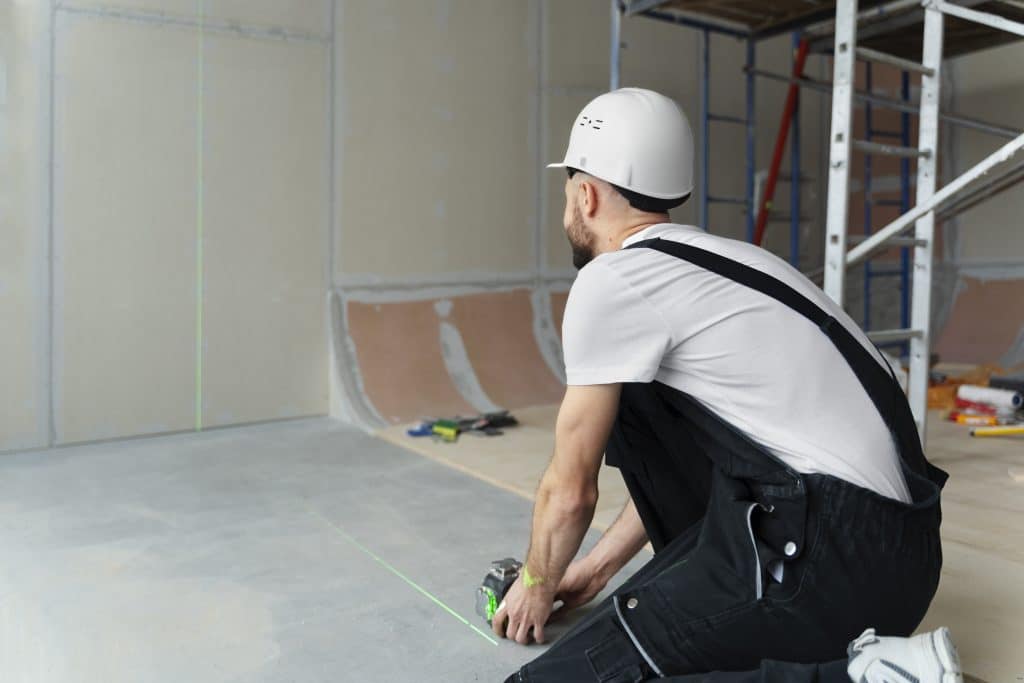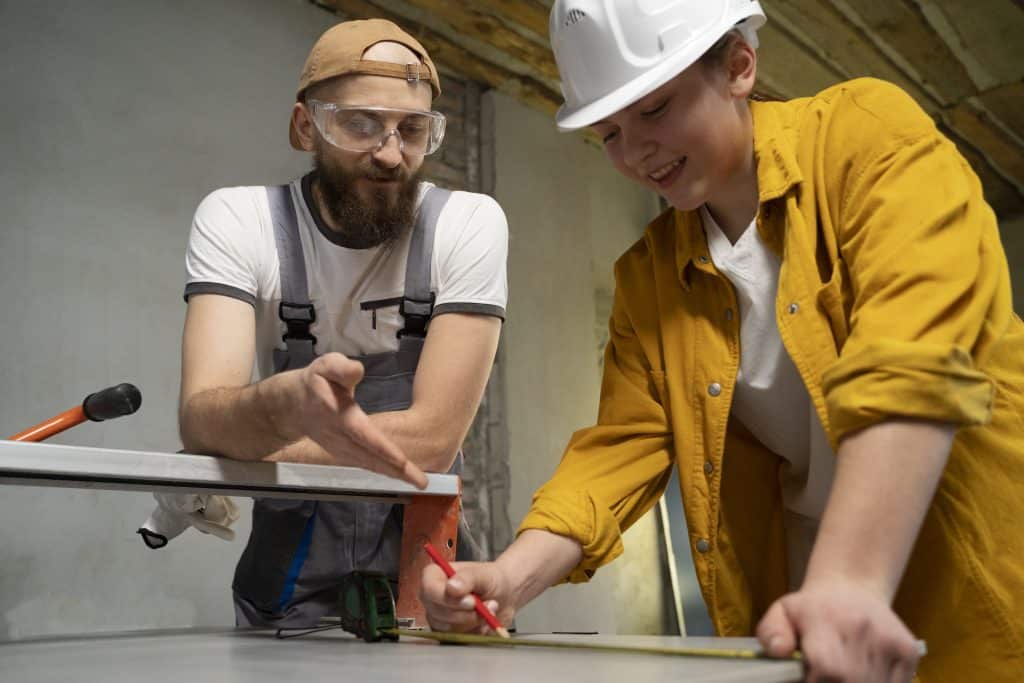Contents
- 1 What Is Basement Underpinning?
- 2 Underpinning process
- 3 Factors Affecting Basement Underpinning Costs
- 4 Average Underpinning Costs
- 5 What Additional Costs Are There?
- 6 Tips to Make Basement Lowering Affordable
- 7 Alternative Underpinning Solutions and Their Expenses
- 8 How to Hire an Affordable Basement Underpinning Contractor
- 9 Conclusion
- 10 Basement Underpinning Costs FAQ
When you decide that you need basement underpinning in Hamilton, one of the first things you definitely want to know the basement underpinning cost. As you may guess, basement lowering can be quite an expensive renovation. Especially when you want it done right and use top-quality materials. The expenses for foundation underpinning and basement lowering vary a lot and are influenced by factors like soil type, property size, and others.
We all know how expensive real estate is in Canada. No wonder more and more people decide to do a home renovation project rather than buy a new flat or house. It’s really challenging to add a floor on the roof, so sometimes a basement is your best option.
However, the actual cost of basement lowering and underpinning can also be high, so we’re sharing some tips to lower it.

What Is Basement Underpinning?
Basement underpinning, sometimes reffered to as foundation underpinning, is a construction technique used to increase the depth or strengthen a building’s existing foundation. It involves excavating below the existing foundation and constructing additional support for better structural stability. You start this process when a building’s foundation has cracks or begins to change due to soil movement, aging, or changes in the load-bearing capacity.
Does it Affect House Value?
Basement lowering and underpinning increases a home’s value by making it more accessible and comfortable and improving the overall strength of the building. Typically, basements are around 6 feet high, which can be quite limiting. Imagine adding 2 feet, achieving a total height of 8 feet! The space becomes much more practical and comfortable.
Basement underpinning vs benching
These two are different things, both benching and underpinning have their benefits and applications. Benching is often seen as a quicker and less costly option. During the benching, you create extra space without altering the foundation depth, but remember that benching reduces the usable interior space.
Many homeowners prefer the underpinning process because it can make the basement into a rentable space or a fully finished area. This method needs detailed engineering work and sequential excavation to preserve the structural safety of the home.
Underpinning process
Basement underpinning has several stages, each equally as important for getting a high quality result. The foundation underpinning process cosists of:
- Site Inspection and Evaluation
WillFix structural engineer assesses the existing foundation, identifies structural issues, and determines the appropriate underpinning method.
- Detailed Design and Engineering
Our team works on a detailed design plan that covers all the calculations, reinforcement requirements, and excavation specifications.
- Excavation and Shoring
The underpinning process itself finally begins now. We excavate the soil beneath the existing foundation, often in sections to maintain stability. Then we install temporary shoring supports as a collapse prevention measure.
- Underpinning and Reinforcement
Next up is constructing new footings or piers beneath the existing foundation to strengthen it. Depending on the project’s requirements, this involves using concrete, steel beams, or helical piles.
- Waterproofing and Finishing
Once the underpinning is complete, our team will take care of waterproofing measures and finish the basement according to the desired design and functionality. Read more about future water damage protection tips in our previous article, How To Protect Your Home From Water Damage.
It may sound complex, but you can rest assured that our team will answer all of your questions and explain in plain language what is going on and what steps are next.
Factors Affecting Basement Underpinning Costs
Multiple factors influence the cost of basement lowering and underpinning. They also vary from one project to another, affecting both the complexity and the price of the work. Knowing what you are paying for in advance helps you estimate and plan your budget accordingly.
That’s what influences underpinning expenses:
- Structural analysis and design to ensure your foundation lasts a lifetime;
- Complexity of the foundation underpinning method;
- Depth and breadth of excavation required;
- Soil type, which affects stability and digging efforts;
- Local building code requirements impacting construction practices.
Our WillFix team approaches each project with meticulous care, as if we are working on our own home. That’s why we guarantee to safeguard the structure’s longevity, all while keeping the underpinning costs affordable.
Average Underpinning Costs
As we said earlier, basement lowering and underpinning cost varies significantly depending on the specific requirements of each project. Prices range between $50 and $100 per square foot. However, it’s important to note that this is a general estimate, and obtaining detailed quotes from reputable contractors is crucial for accurate pricing.
What Additional Costs Are There?
In addition to the linear foot cost, there are several other expenses to consider, including but not limited to:
- Excavation and shoring costs
- Engineering and architectural fees
- Material costs (concrete, steel, etc)
- Waterproofing and drainage solutions
- Finishing and restoration work
You would only calculate some things yourself. Plus, no one cancelled unforeseen circumstances. Even if you have received a nice and accurate estimate, during the excavation process, ground waters may rise, or something else may happen. We recommend always being patient, controlling the work performed and trusting our professionals.
Tips to Make Basement Lowering Affordable
It’s ok if you want to cut back on foundation costs, especially if you are on a tight budget. We have to admit initial costs can be surprisingly huge and disturbing, but it is definitely worth it. Plus, there are effective ways to manage and reduce these costs without compromising on quality. For example:
- You should compare quotes from various contractors. In such a manner, you can find the most competitive price and know the range of services offered;
- You can complete some tasks yourself. Painting a wall, minor finishing work, or even cleanup aren’t subbranches of rocket science. Yes, you’ll definitely waste more time, and the result won’t be perfect, but you’ll save a lot!;
- It is a pro tip, but try looking for deals on source materials. Sometimes, you can purchase supplies yourself, and they will be much cheaper than going through a contractor;
- Consider timing and seasonal discounts, as we may provide affordable special offers during off-peak seasons or slower periods;
- Finally, just create a well-thought-out plan. This will reduce the waste of materials and time, which in turn will lower overall costs.
Obviously, thoughtful planning and smart decision-making effectively lower the cost of basement lowering and underpinning. It’s also a great idea to save up and hire a professional contractor, since you won’t have to think where to get good materials and how to do it all properly, avoiding costly mistakes.

Alternative Underpinning Solutions and Their Expenses
Home renovation isn’t limited by underpinning cost only. There are additional methods that can be cheaper upfront but will require more maintenance in the future. Thus, mass concrete underpinning might cost less upfront but could lead to more labour spending over time. It involves digging box-shaped pits under existing foundations and filling them with concrete. It’s labour-intensive but uses simple materials. The costs are mostly tied to manual work and the amount of concrete used. Beam and base solutions may offer savings on labour costs despite potential increases in material expenses.
Non-invasive basement renovation techniques
Resin injection is a noninvasive technique with unique cost implications. It stabilizes foundations by injecting resin into affected soil areas, which expands and hardens. The process comes with minimal disruption compared to traditional methods and is particularly effective where conventional excavation is either impractical or too expensive.
Screw pile benefits
Screw piles present financial benefits when conditions are right. They are fast to install with minimal disturbance, translating into direct labour savings for a project.
Screw piles are quite a practical choice for new constructions, when you’re in need of swift stabilization, and when you want significant foundation solution cost reductions.
Screw piles not only reduce installation time but also lessen the need for large machinery onsite, further cutting down on costs associated with placement and changes during construction phases.
How to Hire an Affordable Basement Underpinning Contractor
Finding a basement lowering and underpinning contractor that’s reputable, experienced, and also affordable at the same time is not an easy task. Use these tips to make the selection easier for yourself:
Researching and Shortlisting Contractors
Do a thorough research, checking online reviews, and asking for recommendations. Then create a shortlist of potential contractors that specialize in basement works.
Getting Multiple Quotes
Reach out to the contractors you picked out and request detailed quotes. Check that they include all the necessary elements of the underpinning project. On our website, you can leave your phone number and receive a FREE estimate to learn about the cost of your project. You can call also make a call +1 (647) 372-5084 contacting the WillFix team to receive all the information about the cost right away.
Before accepting an underpinning quote, ensure it encompasses all potential costs. This includes contingencies and hidden fees that may arise during the project. An itemized list of services is crucial for transparency.
Contractors should provide a detailed breakdown. This way you can accurately compare different basement lowering contractors and estimations. Look closely at what each line item covers to really understand what you are paying for.
Evaluating Experience and Credentials
Look for contractors with extensive experience in basement-related services like concrete crack repair, and ensure they possess the required licenses, certifications, and insurance. This way, you’ll know you’ll get the best and the most affordable solution.
Checking References and Reviews
Contact past clients and read reviews to check the contractor’s reliability, quality, and customer satisfaction.
Conclusion
Having an idea of the basement underpinning and lowering cost is half of the success of project planning. It’s an investment not just in terms of money but also in enhancing your house’s value and functionality. With a plan and a professional at your side, you can make this ambitious project a reality well within your budget.
Expert opinion
Leroy S. Gage
Leroy is a professional with 25 years of practical experience in foundation construction and engineering. His deep knowledge and understanding of regional building regulations and environmental conditions allow him to offer the most modern and customized solutions.
It may be challenging to decide whether you need such a long and time-consuming home upgrade right away. That’s why I recommend you take your time and think. Prepare a budget plan; probably ask your neighbours – maybe they already did basement underpinning and can recommend someone. Or just contact WillFix professionals and get a free and extensive consultation
Basement Underpinning Costs FAQ
-
What does affect the cost of basement underpinning and lowering?
Costs are influenced by the type of foundation, depth of embedment, materials used, complexity of the work, and site.
-
How can these factors affect the project budget?
They can significantly increase a project's cost, so consider them for budget planning.
-
What phases comprise the construction process?
The construction process includes three main stages: initial consultation and planning, excavation and foundation, and interior finishing.
-
What costs are associated with each stage of the construction process?
Certain costs are associated with each stage: in the first stage, there are professional fees and permits, in the second stage, there are materials and the work of the builders, and in the third stage, there are materials for interior decoration.

